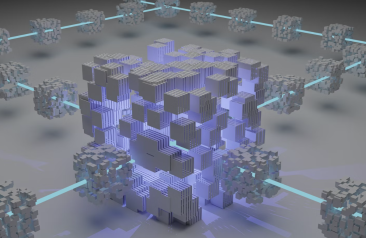Concepts
0 Results
WHAT IS BITCOIN MINING? Bitcoin is known as a proof-of-work (PoW) network. PoW networks require “miners” to solve computational puzzles to add blocks to the blockchain. Miners who supply more computational power to the network have a higher chance of processing a block, and successful miners are compensated with Bitcoin tokens. Transactions on the Bitcoin network are grouped into blocks, and then block data is put through a cryptographic algorithm...
INTRODUCTION Blockchain networks initially were more like closed-loop systems, meaning the value created and traded on-chain was confined to crypto native assets. As technology has developed, blockchains and the real world are becoming more intertwined. Crypto protocols and TradFi institutions alike are looking to tokenize real-world assets and benefit from transaction efficiencies, cost savings, interoperability, composability, and transparency. Protocols have already begun bringing assets like dollars and treasuries on-chain while...
WHAT ARE AIRDROPS? Crypto Airdrops are a unique growth and distribution mechanism that crypto protocols use to attract users and give them ownership of the protocol through the "airdropping" of tokens. Airdrops involve giving away tokens to selected users to generate interest, raise awareness, and attract potential users to the project. Most airdrops aim to distribute tokens to early users and backers of the project, ideally rewarding these early backers...
INTRODUCTION Ethereum’s shift from proof-of-work to proof-of-stake enabled ETH holders to stake their tokens and help secure the blockchain network. As compensation for securing the network, stakers are rewarded with additional ETH tokens. At first, stakers were required to post 32 ETH (the minimum amount to run a node), and the user’s ETH tokens were to be locked until the Shapella upgrade was completed (successfully completed in March). Due to...
WHAT IS MEV? MEV or Maximal Extractable Value (MEV) is a topic of crypto that has had a massive uptick in activity and debate in recent years. It occurs when the block producers in a blockchain (miners or validators) extract value by reordering, including, or excluding transactions within a block, often at the expense of users. In other words, block producers can determine the order in which transactions are processed...
WHAT ARE ORDINALS? Ordinals, commonly called “Bitcoin NFTs,” have been one of the most exciting developments in the Bitcoin ecosystem this year. Technically, Ordinals are a way of attaching or “inscribing” data to individual sats or satoshis (the smallest unit of a Bitcoin at 1/100,000,000) on the Bitcoin blockchain. The term “Ordinal” is derived from Ordinal Theory, a recently developed system for numbering sats in the order they are mined....













